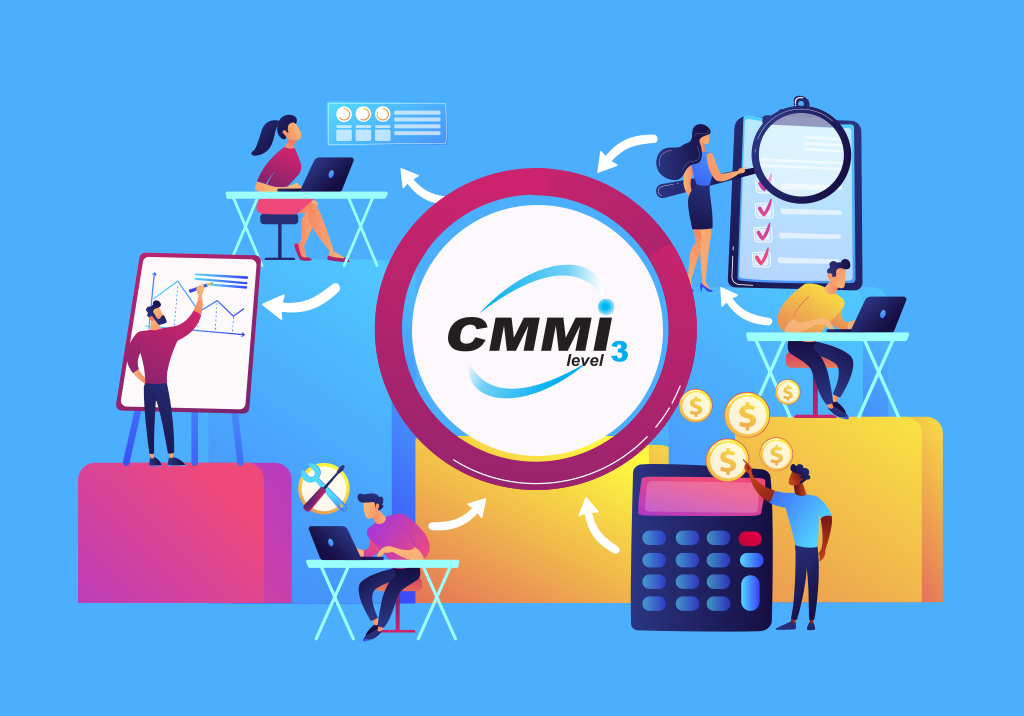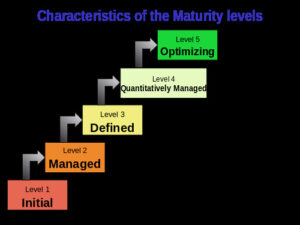In today’s highly competitive IT landscape, delivering high-quality software efficiently is crucial for business success. At MN Service Providers (MNSP), we emphasize structured methodologies to ensure optimal product development. One of the frameworks we adopt is the Capability Maturity Model Integration (CMMI) in software development, a globally recognized process improvement approach that enhances product quality, process efficiency, and overall business performance.
This blog post will provide an in-depth look at how MNSP integrates CMMI in software development, ensuring that we consistently meet high-quality standards while maintaining agility in our development lifecycle. Additionally, we offer CMMI-based consulting and implementation services to help businesses optimize their processes and achieve higher maturity levels.
External Resource: Learn more about the official CMMI framework at CMMI Institute.

Understanding CMMI in Software Development and Its Importance
 CMMI (Capability Maturity Model Integration) is a set of best practices designed to improve process maturity within an organization. It focuses on process optimization, risk management, and quality assurance, helping businesses develop products and services that align with industry standards.
CMMI (Capability Maturity Model Integration) is a set of best practices designed to improve process maturity within an organization. It focuses on process optimization, risk management, and quality assurance, helping businesses develop products and services that align with industry standards.
CMMI in software development is categorized into five maturity levels:
Initial (Level 1): Processes are unpredictable, reactive, and sometimes chaotic.
Managed (Level 2): Processes are planned and executed in a structured way.
Defined (Level 3): Processes are standardized across the organization.
Quantitatively Managed (Level 4): Processes are measured and controlled.
Optimizing (Level 5): Continuous improvement is prioritized through innovation.
MNSP aligns its software development lifecycle with CMMI principles to ensure our processes are standardized, measurable, and continuously evolving. Furthermore, we assist organizations in implementing these best practices to enhance their process efficiency and software product quality.
MNSP’s CMMI-Driven Approach to Software Development
1. Requirement Analysis and Management
 At MNSP, we start software development with a detailed requirement analysis phase. We collaborate closely with stakeholders to gather, define, and document business and technical requirements. Our structured approach ensures:
At MNSP, we start software development with a detailed requirement analysis phase. We collaborate closely with stakeholders to gather, define, and document business and technical requirements. Our structured approach ensures:
Clarity in project scope and objectives.
Identification of potential risks early in the process.
Alignment of requirements with business goals and customer needs.
By implementing CMMI in software development at Level 2 and 3, we standardize our requirement gathering process, ensuring that all projects follow a structured approach to defining customer expectations. Additionally, we help our clients establish robust requirement management frameworks to improve their project success rates.
2. Process Standardization and Quality Control
MNSP follows CMMI’s Defined (Level 3) approach, which helps us implement standard operating procedures (SOPs) for each phase of development. Our quality control measures include:
Well-defined coding standards.
Regular peer reviews and code audits.
Automated testing strategies for early bug detection.
This structured process minimizes errors and enhances overall software reliability. We also offer consulting services to businesses looking to implement similar quality control mechanisms in their software development workflows.
3. Agile Integration with CMMI Best Practices
While CMMI provides a structured framework, MNSP also integrates Agile methodologies to maintain flexibility in software development. We blend Scrum and Kanban techniques with CMMI’s structured approach to achieve:
Iterative development cycles.
Continuous feedback loops.
Quick adaptability to changing client requirements.
This hybrid approach ensures that our development teams remain efficient without compromising on process maturity. We also assist organizations in adopting Agile-CMMI hybrid models to enhance their software development agility while maintaining process discipline.
4. Risk Management and Mitigation
One of the key benefits of CMMI in software development is proactive risk management. MNSP identifies potential project risks in advance and employs mitigation strategies, such as:
Risk assessment matrices.
Regular risk review meetings.
Contingency planning to minimize project disruptions.
By integrating Quantitatively Managed (Level 4) practices, we ensure that risks are not only identified but also controlled effectively using data-driven insights. We offer risk assessment and mitigation services to businesses looking to enhance their risk management strategies.
5. Process Measurement and Continuous Improvement
At MNSP, we believe that process improvement is an ongoing effort. We utilize data analytics and performance metrics to measure process efficiency, track project performance, and identify areas for enhancement.
Using CMMI in software development at Level 5 (Optimizing) strategies, we focus on:
Conducting retrospectives after each project cycle.
Implementing feedback-driven improvements.
Encouraging innovation through research and development.
By continuously refining our processes, we ensure that MNSP stays ahead in delivering cutting-edge, high-quality software products. We also help businesses establish performance measurement systems that drive continuous process enhancement.
MNSP’s CMMI-Based Services
MNSP is not just committed to implementing CMMI in software development internally; we also offer CMMI consulting and implementation services to businesses looking to enhance their software development processes. Our offerings include:
CMMI Gap Analysis: Evaluating current processes against CMMI standards.
Process Optimization & Standardization: Helping organizations improve efficiency.
Agile-CMMI Hybrid Implementation: Blending Agile methodologies with structured process management.
Risk Management Consulting: Identifying and mitigating potential project risks.
Quality Assurance Framework Development: Implementing testing and validation best practices.
Training & Workshops: Educating teams on CMMI best practices and implementation strategies.
Why Choose MNSP for CMMI in Software Development?
Proven Expertise: MNSP has extensive experience in CMMI-based software development and consulting.
Customized Solutions: We tailor our CMMI strategies to fit the specific needs of each business.
End-to-End Support: From analysis to implementation and training, we provide complete assistance.
Measurable Results: Our approach ensures higher efficiency, reduced risks, and improved software quality.
Conclusion
MNSP follows CMMI-based software development, combining structured process improvement, Agile practices, and innovation to deliver high-quality solutions. We also help other businesses adopt CMMI frameworks to boost their development and operational efficiency. Whether you need IT solutions or CMMI implementation support, MNSP is your trusted partner for quality and success.
References
Frequently Asked Questions (FAQ)
The Capability Maturity Model Integration (CMMI) is a process and behavioral model that helps organizations streamline process improvement and encourage productive, efficient behaviors that decrease risks in software, product, and service development.
The five levels of the Capability Maturity Model Integration (CMMI) are Initial, Managed, Defined, Quantitatively Managed, and Optimizing, representing an organization’s process maturity and capability.
You can apply CMMI to hardware, software, and service development across all industries.
The purpose of the CMMI model is to assess the maturity of an organization’s processes and to provide guidance on improving processes, with a goal of improved products.
In the context of CMMI (Capability Maturity Model Integration), Level 5 the “Optimizing” level, is considered the highest and most desirable. It signifies an organization’s ability to continuously improve and optimize its processes, leading to the highest quality and lowest risk.
The CMM is based on a five-level maturity model that measures an organization’s level of process maturity. Each level represents a different stage of process improvement, with level 1 being the lowest and level 5 being the highest.
“Antony is a BCA graduate with a passion for technology and business solutions. With a strong interest in web development, UI/UX, and business analysis, I aim to enhance my skills and contribute effectively to innovative projects. Eager to learn and grow, I strive to develop impactful solutions in the tech industry.”